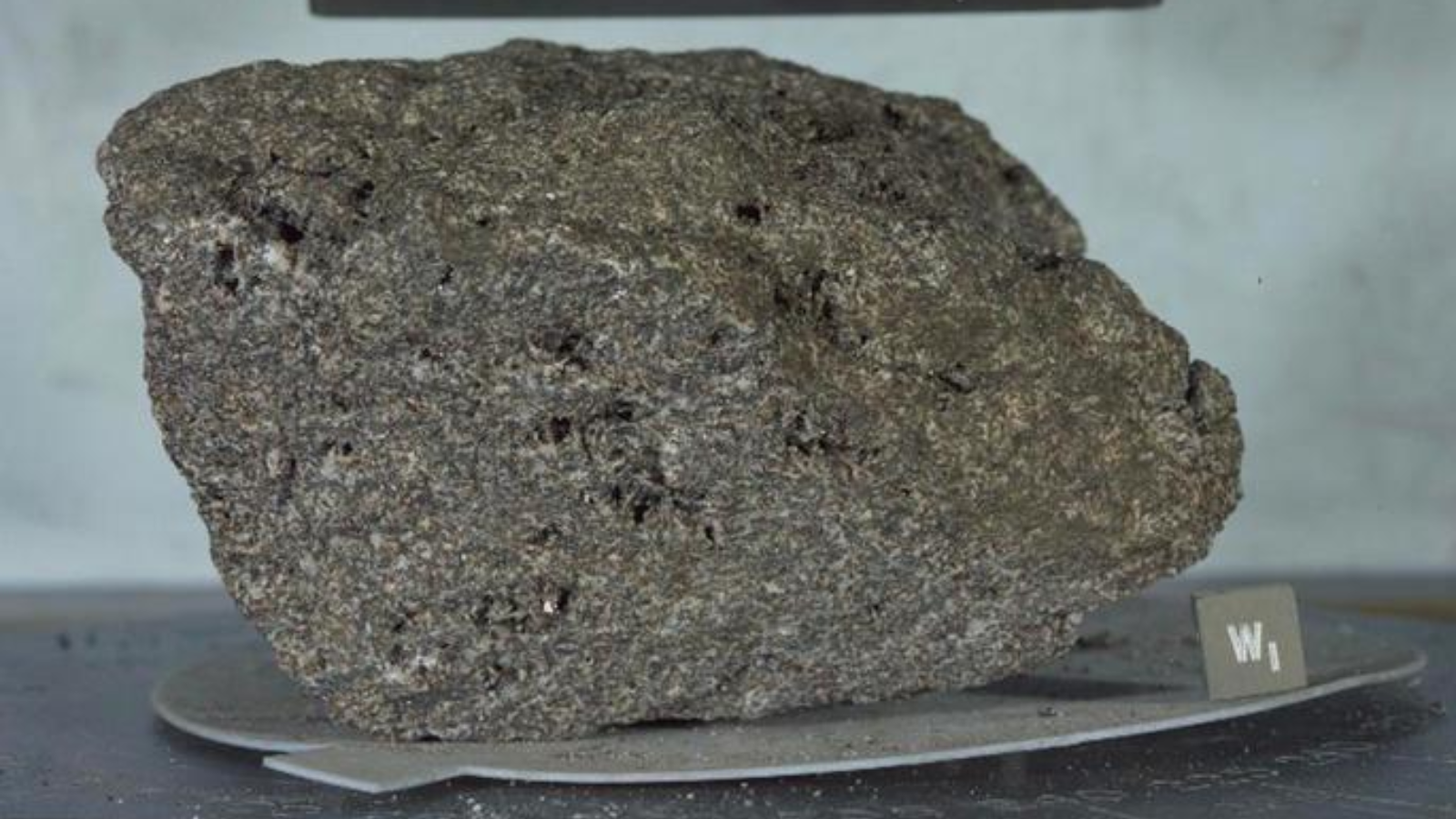Moon rock revelations could solve lingering lunar geology puzzle
Scientists may finally understand the process that creates a unique moon rock type.

Scientists may finally understand how a unique rock type was created on the moon and came to be distributed across the lunar surface.
The revelation could solve a puzzle that has long confused researchers and may help paint a more complete picture of lunar geology.
An international team of scientists discovered a critical reaction that occurred deep with the moon 3.5 billion years ago that caused the exchange of iron in magma with magnesium in surrounding rocks. This changed chemical and physical properties in one of the three components of magma, "melt," which is made of ions from minerals that have liquefied.
Related: Scientists find hydrogen in Apollo moon rocks, suggesting astronauts can harvest lunar water
"The origin of volcanic lunar rocks is a fascinating tale involving an 'avalanche' of an unstable, planetary-scale crystal pile created by the cooling of a primordial magma ocean," University of Bristol professor and team co-leader Tim Elliott said in a statement.
"Central to constraining this epic history is the presence of a magma type unique to the moon, but explaining how such magmas could even have got to the surface, to be sampled by space missions, has been a troublesome problem." Elliott continued.
Since the NASA Apollo missions in the 1960s and 1970s returned samples of solidified, ancient lava from the lunar crust, it has been known that certain regions of the moon's surface are surprisingly rich in titanium (Ti).
Breaking space news, the latest updates on rocket launches, skywatching events and more!
Subsequent data collected by moon-orbiting satellites showed titanium-abundant magmas, or "high-Ti basalts," are widespread across the moon. The origin of such rocks was difficult to explain.
"Until now, models have been unable to recreate magma compositions that match essential chemical and physical characteristics of the high-Ti basalts," team co-leader and research fellow at the University of Münster Institute of Mineralogy Martijn Klaver said in the same statement. "It has proven particularly hard to explain their low density, which allowed them to erupt some three and a half billion years ago."
The team set about solving this puzzle using high-temperature laboratory experiments conducted here on Earth with molten rock that aimed to mimic high-Ti basalts.
They combined the results of these experiments with spectroscopic examinations of actual high-Ti basalts returned from the moon.
This mixed methodology revealed a distinctive composition of different isotopes of elements — the term for elements with a varied number of neutrons in their atomic nucleus — within high-Ti basalts.
This is the fingerprint that points to the reaction between melt and solids in magma beneath the lunar surface billions of years ago that resulted in the creation of these unique rocks.
"It is great to have resolved this dilemma," Elliot concluded.
The team's research is published in the journal Nature Geoscience.

Robert Lea is a science journalist in the U.K. whose articles have been published in Physics World, New Scientist, Astronomy Magazine, All About Space, Newsweek and ZME Science. He also writes about science communication for Elsevier and the European Journal of Physics. Rob holds a bachelor of science degree in physics and astronomy from the U.K.’s Open University. Follow him on Twitter @sciencef1rst.

